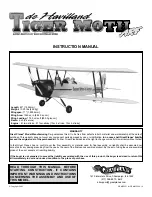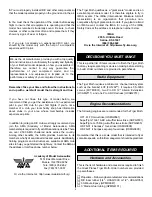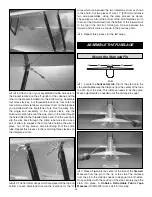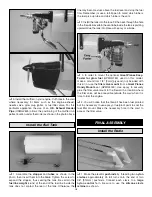
❏
10. Remove any pins you may have inserted into the
hinges. Adjust the elevator so there is a small gap between the
LE of the elevator and the stab. The gap should be small-just
enough to see light through or to slip a piece of paper through.
❏
11. Apply six drops of thin CA to the top and bottom of
each hinge. Do not use CA accelerator. After the CA has
fully hardened, test the hinges by pulling on the elevators.
❏
12. To attach the rudder drill a 3/32" [2.4mm] hole, 1/2"
[13mm] deep in the center of each hinge slot to allow the CA
to “wick” in. Follow-up with a #11 blade to clean-out the slots
and cut a strip of covering from the hinge slots in the fin and
rudder. Trial fit two hinges into the rudder and place onto the
fin. Locate the
tail wheel wire
in the rudder with the two
hinges in place and mark the location (approximately 1-1/2"
or 38mm from the top of the angle on the bottom of the
rudder). Also mark the location of the
nylon bearing
and cut
a slot for it in the aft end of the fuse with a #11 blade.
❏
13. Drill a 3/32" (2.4mm) hole in the rudder at the marked
location to the depth of the tail wheel wire and cut a groove for
the wire from the bottom of the rudder with a sharp hobby knife
or a
Groove Tube
(GPMR8140) to accommodate the wire.
❏
14. Apply
petroleum jelly
to the tail wheel bearing where
the wire passes through. This will prevent the wire from
being glued to the bearing. Permanently join the rudder to
the fin using epoxy to glue the “arm” portion of the tail gear
wire into the rudder and the bearing into the aft of the fuse.
Use thin CA to glue in the hinges after the epoxy has cured.
❏
15. Locate the two stab support braces and drill a 1/8"
[3mm] hole in the tab portion at both ends of each brace.
Mark the location as shown in the photo and drill a 1/16"
[1.6mm] hole in the bottom of the stab and fuse. Apply thin
CA to each of the holes to harden the area. Install the braces
with the four 3mm x 12mm Phillips head wood screws.
14














































